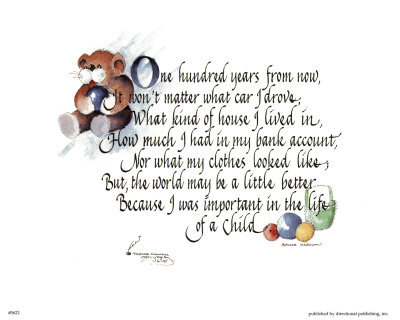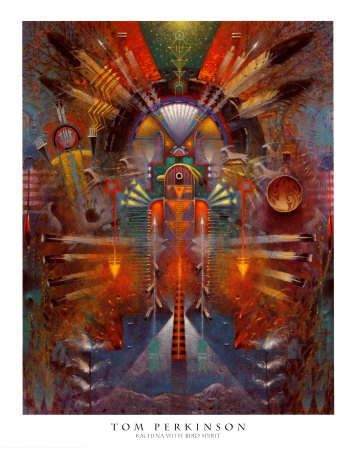As a Native American scholar of environmental history and religious studies, I am often asked what Native American leaders mean when they say that certain landscapes are “sacred places” or “sacred sites.”
Native American Religion
Native American Religion
Superstitions of a ridiculous, and most extravagant nature, were found associated with these Indians, and even now, in almost every town, or hamlet, the child’s first education is a belief in their authenticity; and they grow up from infancy familiar with all their fabulous traditions. The effect tends to enervate their physical faculties, and weaken their mental, so that they naturally become a pusillanimous race of people, liable to be deceived, imposed upon, and of course easily influenced by the puplem, and old men, who are their sole instructors.
The Instructions the Juaneño Band of Mission Indians Gave to Their Children
One of the difficulties most perplexing to the Indians, was, the rearing and educating their children. They were unacquainted with the arts, excepting those most necessary for their maintenance, and ignorant of all useful knowledge to keep them from idleness; so that their only education consisted in the construction of the bow and arrow, with their peculiar uses, in procuring game and defending themselves from their enemies.
Although, ignorant as they were of the knowledge of the true God, the moral instruction given by parents to their children, was contained in the precepts of Chinigchinich, which were strongly impressed upon their minds, that they might become good, and avoid the fate of the evil.
The temples erected by command of the God Chinigchinich, or the celebrated idolater Ouiamot, were invariably erected in the centre of their towns, and contiguous to the dwelling-place of the, captain, or chief; notwithstanding their houses were scattered about without any particular regard to order, still, they managed to have the location of his house as near the middle as possible.
Chinigchinich is an ethnographic account of the culture and notably religious beliefs of the native Californians in the vicinity of the famous mission San Juan Capistrano. This is the mission where the swallows, legendarily, return every year. There is nothing, however, about the returning swallows in this book. Boscana was one of the few Spanish missionaries who, like Bishop Landa in the Yucatan, actually took an interest in the culture they were destroying.
Boscana was, typically, a bigot and a racist (he describes the Indians as being like monkeys). However, he lived among them for decades and obviously had an inquisitive mind and a talent for observation. While he condemns the practices and beliefs of the indigenous people, he describes them in great detail. Barring a time machine, this is the only first-hand account of mission-era Juaneños we will ever have.
The translator of this treatise, Alfred Robinson, was one of the first Yankees to settle in California.
Indian gods, godesses and dieties
22 ViewsThe general characteristics and origins of Native American religion shed light upon the more contemporary sects. But the development of the numerous individual traditions, passed down orally, remains unclear. The sheer number of groups and the diversity of the nuances of belief complicates matters further.
The Indian Shaker Church Religion
22 ViewsThe Indian Shaker Church is a Christian denomination founded in 1881 by Squaxin shaman John Slocum and his wife Mary Slocum in Washington. The Indian Shaker Church is a unique blend of American Indian, Catholic, and Protestant beliefs and practices. The Indian Shakers are unrelated to the Shakers of New England (United Society of Believers) and are not to be confused with the Native American Church.
Seven Drums Religion (Washat)
31 ViewsThe Seven Drums Religion has many names. Called wáashat (Washat, meaning “dance”) or waasaní (Washani, “dancers” or “worship”) in the Sahaptin language of the Columbia Plateau, it is also known as the Sacred Dance Religion, the Longhouse Religion, or simply the Indian religion.
Native American Church
23 ViewsThe story of the Native American Church is one of cultural survival, social adaptation, and moral revitalization. On October 10, 1918, an intertribal coalition of Peyotists achieved legal definition for their religion through the incorporation of the Native American Church of Oklahoma.
Pawnee Beliefs
22 ViewsThe Pawnee believe there are many powers in the world. At the creation of the world, lesser powers were made, because Tira’wa-tius, the Mighty Power, could not come near to man, or be seen or felt by him. These lesser powers dwell in the great circle of the sky.
Mayan Spiritual Mythology
22 ViewsHere is a list, hopefully reasonably complete, of known Mayan God-forms. The information here is necessarily brief; a full accounting of all these entities would be a massive book in its own right.
Haudenosaunee Spiritual Mythology
22 ViewsThese Haudenosaunee spiritual concepts are intended as a general reference guide for students of Eastern Woodland mythology. The format will consist of a Name (and occasionally a translation in the Seneca or Seneca-Mingo dialects) with a description of the divinity.
Lakota Spiritual Mythology
25 ViewsThese Lakota spiritual concepts are intended as a general reference guide for students of Plains Indian mythology. The format will consist of a Name (and occasionally a translation) with a description of the divinity.
Mountain Spirits
22 ViewsThe Mountain Spirits are a race of supernaturals who dwell within the interiors of many mountains, according to Chiricahua Apache belief.
Omaha Sacred Pole
22 ViewsThe Omaha revere an ancient Sacred Pole, from before the time of their migration to the Missouri, made of cottonwood. It is called Umoⁿ’hoⁿ’ti (meaning “The Real Omaha”), and considered to be a person. It was kept in a Sacred Tent in the center of the village, which only men who were members of the Holy Society could enter.
Blackfeet religion and spirituality
22 ViewsThe Blackfeet Creator is Na’pi (Old Man). This is the word used to indicate any old man, though its meaning is usually loosely given as white. An analysis of the word Na’pi, however, shows it to be compounded of the word Ni’nah (man), and the particle a’pi, which expresses a color and which is never used by itself, but always in combination with some other word.
The Blackfeet word for white is Ksik-si-num’ while a’pi, though also conveying the idea of whiteness, actually describes the tint seen in the early morning light when it first appears in the east. The dawn is not a pure white, but has a faint cast of yellow. Na’pi, therefore, would seem to mean ‘dawn-light-color-man,’ or ‘man-yellowish-white.’ This is also the color of many old men’s hair.
QUESTION:
Are there any areas in Kentucky that are considered sacred ground?
~Submitted by Brooks D.
A 200-acre wooded site west of Tisch Mills guards its secrets well. Maybe that’s what its original inhabitants intended.But for historian Bruce Vandervest and several other investigators, the site, confirmed to be a sacred Native American burial ground, continues to draw them back in their determination to find out more: a Viking ship also may be part of the find.
Many days passed before the joy of that day settled deeply into my heart and I could move forward to thinking on the realities of the present situation of the buffalo on our People.
The senseless slaughter of 60 million buffalo brought the herds to the point of extinction.
There was no reverence held for the sacred, life-giving buffalo. These creatures were nothing more than money in pockets and an insane “sport” to people who shot them for no purpose other than target practice. There was no honor and no thanks given for the taken life and the buffalo were left to rot beneath the sun.
What the buffalo mean to our people
22 ViewsTime never stops and is always moving us forward and through the changes of seasons. Time stands as an unforgiving taskmaster that regulates the passage through eternal tides.
The Retribalization Of The World
22 Viewsby Thomas Ivan Dahlheimer******** I am a 60 year old activist who is spearheading an international movement to revert the derogatory name of Minnesota’s “Rum River” back to its sacred Dakota Indian name Wakan, sometimes spelled Wahkon, and translated as (Great) Spirit. And I am also spearheading a movement to change 11 other MN geographic […]
By Thomas Ivan Dahlheimer
On a Mille Lacs Kathio State Park interpretive sign, Leonard E. Wabasha is quoted as saying: “My people are the Mdewakanton Oyate. Mdewakanton means the People of Spirit Lake. Today that lake is known as Mille Lacs. This landscape is sacred to the Mdewakanton Oyate because one Otokaheys Woyakapi (creation story) says we were
created here. It is especially pleasing for me to come here and walk these trails, because about 1718 the first Chief Wapahasa was born here, at the headwaters of the Spirit River. I am the eighth in this line of hereditary chiefs.” (reference 1.)
Let my spirit pass without shame
22 ViewsO’ Great Spirit, Whose voice I hear in the winds, And whose breath gives life to all the world, hear me! I am small and weak, I need your strength and wisdom.
Symbol of Fortune
22 Views
The old-growth forest in Arlecho Creek is special to the Lummi tribe. It is a place of spiritual worship and a place to interact with Mother Nature.
The clear morning sun filters through the branches of the forest and droplets of dew rest on the surrounding fauna. Birds chirp in unison — a wake-up call for the other wildlife in the forest. This area of Arlecho Creek, located near Mount Baker, is home to cedar, fir and hemlock trees that are centuries old and home to the endangered murrelet bird.
Apache Wedding Prayer
22 ViewsHere is an Apache Wedding Prayer.
The Sun Dance
22 ViewsThe Sun Dance is a ceremony practiced differently by several North American Indian Nations, but many of the ceremonies have features in common, including dancing, singing and drumming, the experience of visions, fasting, and, in some cases, self-torture.
Earth Healing Prayer
22 ViewsEarth Healing Ceremony prayer.
The Sacred Seven Prayer
22 ViewsEarth Prayers for The Great Spirit–The Sacred Seven Prayer as told by Elder Noel Knockwood
Lakota prayer for the dead
30 ViewsA Lakota Sioux prayer dedicated to the dead from the Vietnam War.
Haudenosaunee thanks giving prayer
22 ViewsHaudenosaunee thanks giving prayer….KEYWORDS: native american prayer thanksgiving prayer haudenosaunee prayer seneca prayer turtle clan prayer cornplanter tribe indian prayers prayer of thanks giving give thanks AUTHOR: Family members state that the following prayer, as translated into English, was confirmed as being accurate by a woman who, at the time, was the hereditary Grandmother of […]
Hopi kachinas or katsinas.. KEYWORDS: hopi kachina hopi katsina kachinas hopi ceremonial dolls hopi spirit dolls hopi religious dolls kachina dance hopi ceremonial dances Hopi kachinas (or katsinas as the Hopi people call them) are supernatural beings who live among the evergreens of the San Francisco Peaks south of the Hopi Mesas, and at the […]
Anishinabe prayer carrier
22 ViewsAnishinabe prayer carrier.. KEYWORDS: anishinabe prayer carrier ojibwe ojibwa ojibway chippewa anishinabeg anishinaabe eagle power totem animals spiritural power of birds animals culture tradition religious beliefs The graceful bird of the skies, the eagle, is the prayer carrier and messenger of the Anishinabe people. As the eagle soars arose the skies, one knows he is […]
Rum River Name Change Initiative
22 ViewsAccording to historical documents found in, “Minnesota Geographic Names”, a book written by Warren Upham, and published by the Minnesota Historical Society… in the late 1700s, white men gave the Rum River its current name by way of a “punning translation” that “perverted the ancient Sioux name Wakan”. In Minnesota, “the land of ten thousand […]
KEYWORDS: Thanksgiving Prayer thanksgiving prayer Iroquois seneca Indian prayer for Thanksgiving Lord of the Sky in the beginning of all things be thankful sister corn clinging sisters beans sister squash three sacred sisters sacred fire Iroquois language Seneca language Gwa Gayant’ gogwus Ona’o the sacred food Nyo’sowane, our sister squash Oa’geta, our sister beans FWDP […]
Native American sacred places are where Native Peoples who practice their
traditional religions go to pray for the good day, the precious earth, the
blessing waters, the sweet air and peaceful life for all living beings the
world over.
Keywords: eagle feather Eagle feathers EAGLE FEATHERS significance of the eagle feather eagle feather taboos eagle feather ceremony cerimonial uses eagle ceremonies eagle feather story eagle feather restrictions Source: Oral History as told by Ken Saunders All Native North American Peoples attach special significance to the eagle, and its feathers. The eagle flies higher and […]
AUTHOR: Joe S Sando, Jemez Pueblo Six months of every year, the kachinas resided in the mountains to the west, where they could be seen as cloud banks gathering above the peaks. Then shortly after the winter solstice, they would return to the pueblo. Summoned in secret kiva ceremonies, the kachinas arrived through the sipapu […]
The kachinas
22 ViewsAUTHOR: Michael Lomatuway’ma, Hopi
Among all Pueblo people, religion plays a vital role in daily life. At the heart of religious life, particularly among western groups like the Hopi and Zuni, were the infinitely helpful kachinas-also sometimes called katsinas.
Teach Us To Walk The Soft Earth
22 Viewsnative american poetry indian poem american indian poems indian woman picture free pictures buy posters sioux prayer Grandfather Great Spirit All Over The World, The Faces Of Living Ones Are Alike. With Tenderness, They Have Come
Cherokee Prayer
22 ViewsOh Great Spirit,
Help me always to speak the truth quietly,
Sioux Wedding Prayer
22 ViewsGrandfather, Tunkasina, you are giving us life again. For many days we were lonesome for you. Earth was cold and the winds were strong. But now we hear songs. Your children are singing, and we are happy. They are singing, and we are lighthearted.




